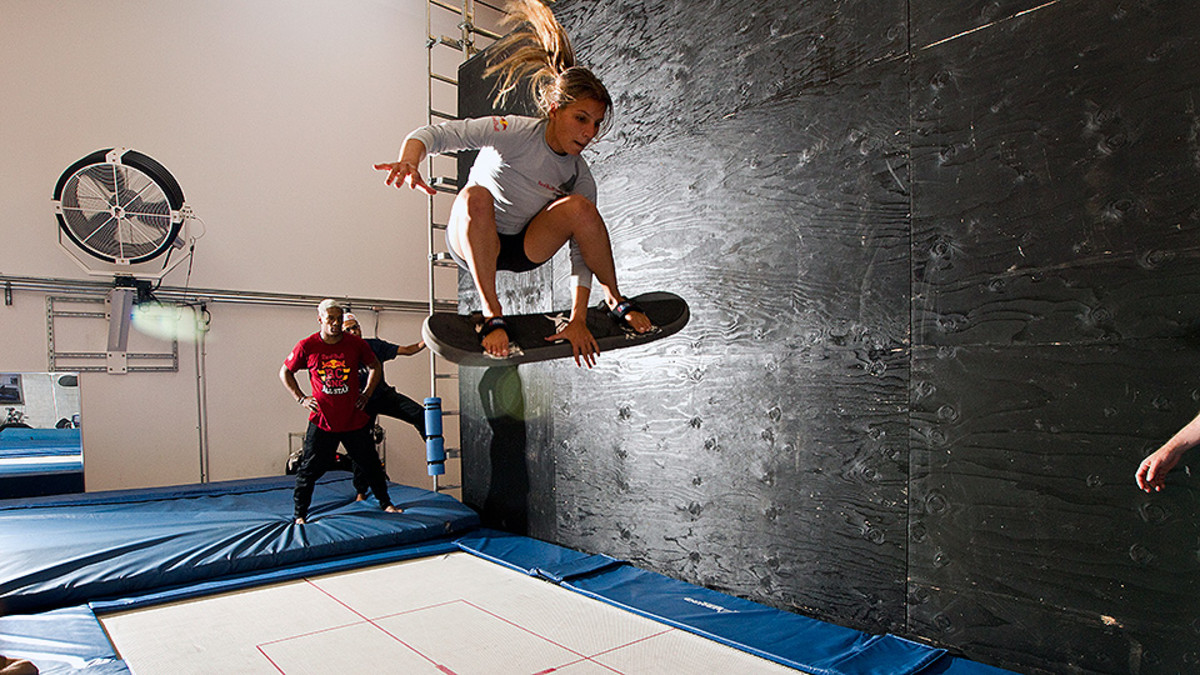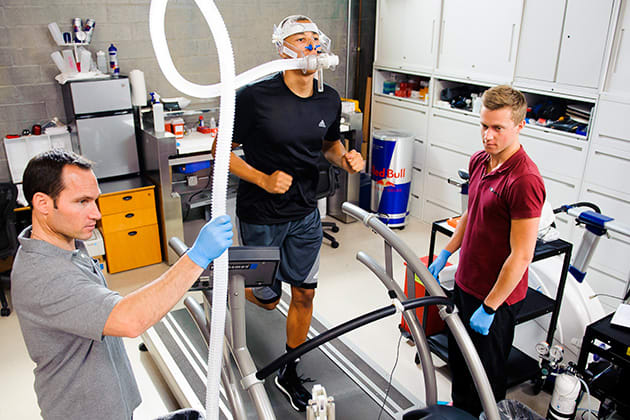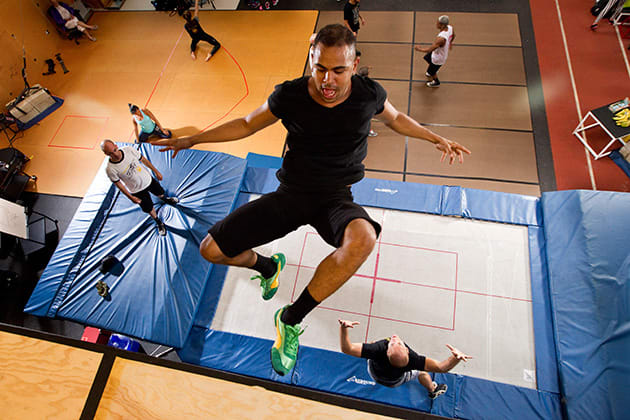Sweat Mecca: Red Bull's high-tech training center builds mind and body
Sure, the Red Bull High Performance Center in Santa Monica, California, has the highest of the high-tech equipment—think Moxy Monitor and cryosaunas (more on those later)—but the former shipping warehouse just minutes from the Pacific Ocean offers a way for Red Bull athletes to do more than train. They can learn all about their bodies, their brains and others in their field.
Tyler Jewell, a Red Bull trainer, says with 170 different North American-based Red Bull athletes, his job is to get to know each athlete, each sport and figure out ways to add to the prominence they already display, and he has plenty of tools at his disposal.
The 3,500-square-foot space has what you’d expect from a Red Bull facility, and then some.
Chris Weidman Q&A: Talking UFC training with the middleweight champ
Inside you can find a skate ramp—for obvious reasons—and a large trampoline to help with air awareness. They also have all the latest workout equipment. There is a large lab component too, for testing everything from lactate thresholds to mobility to visualize how athletes move.
“A big piece for us is benchmarking athletes,” Jewell tells SI.com. “Our team has so much experience we can bulls-eye what athletes need to be doing for training and then re-test to show it is working.”
There’s always a variety of athletes and varying needs moving through the facility. But they aren’t necessarily there for just strength training. “They are all so tremendous,” Jewell says, “the best in the world.” So it isn’t so much about building extra muscle or practicing a new skill that brings athletes into the Red Bull center. It can be anything from injury prevention or recovery to things like psychology and preparation skills.
Jewell says he works with athletes on neurological training, running through the “five gears the brain has” to show athletes how to get the brain waves rolling quickly. Moving the brain from its slowest state to its gamma state—the state that naturally occurs in a fight or flight situation—and monitoring how each individual athlete best does that plays a pivotal role in the testing.
One exercise hooks an athlete to a monitoring system and when the athlete gets brain waves moving, the system signals that to the athlete in the form of a rocket ship taking off. Using this type of tool, Jewell can see where athletes need to train their brains.
Recently, golfer Rickie Fowler underwent the testing. “For him it was stress recovery,” Jewell says. “He needs to forget about that shot.” During the exercise, Fowler was struggling to focus on getting his brain “in the zone.” But once he started regulating his breathing and putting his focus in the right place, he started to understand the process and the rocket ship took flight.
“The idea was, what did you think about—it was your breath,” Jewell says. “When he locked in it helped him understand how he got into the zone.” Fowler still uses that training when on the course to help him focus.
“That is a neat tool we really want to develop, how to train the brain,” Jewell says. “In the end, that is one of the most important pieces.”
But it isn’t the only piece.
Red Bull stays on top of trends, such as with the new Moxy sensor, which sends an infrared light into the muscles about 3 centimeters deep to reflect hemoglobin to measure how much oxygen is in a specific muscle. Jewell says you can use this device to, for example, measure the oxygen level in your bicep. Instead of doing a set number of reps with a set length of rest, a pure “guessing game,” you could instead work your muscle to a specific oxygen depletion rate. A device such as that can also help athletes understand how they can get more from their bodies during competition.
Pro skater Felipe Gustavo wasn’t keen on warming up. Jewell was able to show Gustavo that without warming up, he was competing on muscles with merely a 50% oxygen level. A couple of dynamic warmpus and now the muscles reach 80%. “I’m simplifying it like crazy, but it is like pre-loading,” Jewell says. “You wouldn’t go on a road trip without gas in the car. Now if your gas tank is 80% more full with a dynamic warm up, if we can add a couple pieces like that, if we can change by 1% in the end to help an athlete reach a higher peak, we are allowing them to last longer and be more durable.”
The cryosauna represents another trend-setting piece, a tool that some believe can help with recovery. Jumping into the machine for 30 seconds to three minutes allows your body to go to cool quickly, flash freezing on a surface level that releases hormones key for recovery. Popular with NBA teams, some athletes have fallen in love with the machine and others want to stay away. That is fine with Jewell.
“We set a buffet and let the athletes choose what they want,” he says. “We aren’t selling anything, we are here to make them a little better. The machinery we have here is pretty cool, but we want to take care of the athletes, too.”
Athletes may visit the center, led by director Andy Walshe, for a week to recover from an injury. Others, the locals, will visit whenever home or to grab one of the eight stand up paddleboards to go do ocean or beach workouts.
The wild card piece of the center, though, Jewell says, is the synergy created between athletes as they cross paths. Jewell goes back to the Fowler example. When he was in, so was big-wave surfer Ian Walsh. They became good friends, with Fowler taking Walsh golfing and Walsh taking Fowler surfing.
“It gives them a whole new perspective on their sport,” Jewell says.
Tim Newcomb covers stadiums, design and gear for Sports Illustrated. Follow him on Twitter at @tdnewcomb.







